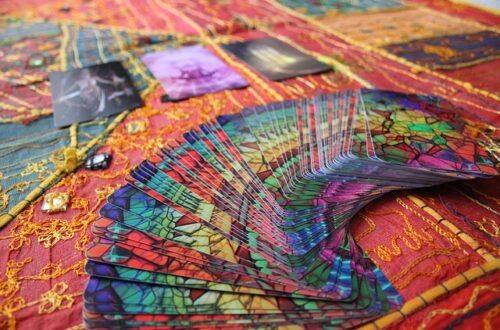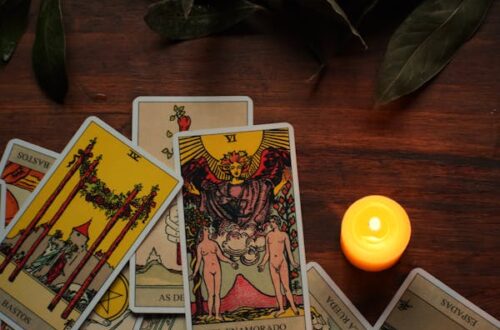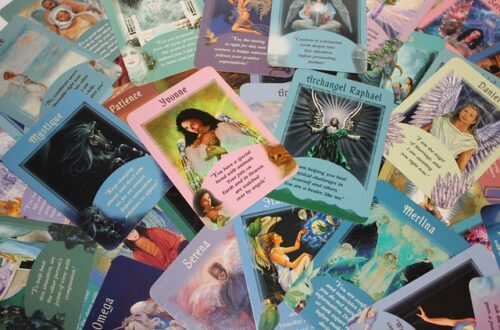
The history and origins of Tarot Card Reading
Table of Contents
The History and Origins of Tarot Card Reading
Tarot card reading is a practice steeped in mystery and intrigue. The origins of tarot cards are complex, encompassing centuries of history, culture, and belief. Throughout this article, we will explore the evolution of tarot, its historical context, and its significance in modern divination practices.
The Early Beginnings of Tarot
The history of tarot cards can be traced back to the 15th century in Europe. They originated as a card game known as tarocchi in Italy. Initially, these cards did not possess any mystical or divinatory significance. Instead, they served as a form of entertainment among the elite. Historical records suggest that the earliest known decks were created for noble families.
In the game of tarocchi, the deck included 78 cards, divided into four suits, similar to modern playing cards. Each suit had numbered cards and face cards. The suits often depicted themes from daily life, such as cups, swords, coins, and wands. This structure laid the foundation for the tarot decks we recognize today.
From Game to Divination
By the late 18th century, tarot cards began to transform from mere gaming tools into instruments of divination. This transition coincided with a growing interest in mysticism and the occult during the Enlightenment period. People sought to uncover deeper meanings and insights about their lives through tarot.
One of the pivotal figures in this transition was Antoine Court de Gébelin, a French writer. In his work, “Le Monde Primitif,” published in 1781, he argued that tarot cards held ancient wisdom. He claimed that the cards were derived from Egyptian hieroglyphs and contained profound esoteric knowledge. Although his theories were unfounded, they sparked curiosity and inspired further exploration into the mystical aspects of tarot.

The Influence of Esoteric Traditions
The rise of esoteric traditions in the 19th century significantly influenced the evolution of tarot. Various secret societies and mystical groups began to adopt tarot cards in their practices. The Hermetic Order of the Golden Dawn, founded in the late 19th century, was particularly instrumental in shaping modern tarot reading.
The Golden Dawn incorporated tarot into its teachings, linking the cards to Kabbalistic principles and astrological correspondences. This association with esoteric knowledge contributed to the perception of tarot as a tool for spiritual exploration. Prominent members of the Golden Dawn, such as Arthur Edward Waite and Aleister Crowley, developed their tarot decks, further embedding mystical symbolism within the cards.
The Rider-Waite-Smith Deck
One of the most significant developments in the history of tarot was the creation of the Rider-Waite-Smith deck in 1909. Developed by Arthur Edward Waite and illustrated by Pamela Colman Smith, this deck became the most popular and widely used tarot deck worldwide. It introduced rich symbolism in the imagery of each card, making it accessible for both beginners and experienced readers.
The Rider-Waite-Smith deck also emphasized the importance of the imagery in divination. Each card told a story, inviting readers to engage with the symbolism and derive personal meanings. This approach contributed to the popularity of tarot as a means of self-reflection and guidance.
The Structure of Tarot Cards
A standard tarot deck consists of 78 cards, divided into the Major Arcana and the Minor Arcana. The Major Arcana contains 22 cards that represent significant life events and spiritual lessons. These cards, including The Fool, The Magician, and The World, symbolize major archetypes and themes in human experience.
The Minor Arcana comprises 56 cards, further divided into four suits: Cups, Swords, Wands, and Pentacles. Each suit corresponds to different aspects of life, such as emotions, intellect, action, and material concerns. This structure allows readers to interpret the cards in relation to various life situations, enhancing the depth of their readings.
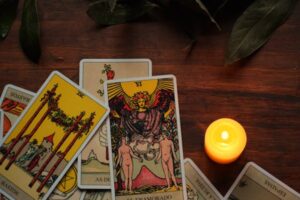
The Role of Intuition in Tarot Reading
While tarot cards possess inherent meanings, intuition plays a vital role in the reading process. Experienced readers often emphasize the importance of connecting with their intuition when interpreting the cards. This connection allows them to tap into their subconscious and draw insights relevant to the querent’s situation.
During a reading, the reader shuffles the cards and lays them out in a specific spread. Each position in the spread carries significance, influencing the interpretation of the cards drawn. By blending traditional meanings with their intuition, readers create a narrative that resonates with the querent’s life experiences.
Modern Tarot Practices
In contemporary society, tarot card reading has gained popularity as a tool for self-discovery and personal growth. Many people turn to tarot for guidance in decision-making, relationship issues, and career choices. The rise of online tarot readings and social media has further democratized access to tarot, allowing individuals to explore this ancient practice from the comfort of their homes.
Additionally, the growing interest in spirituality and holistic practices has contributed to the resurgence of tarot. Workshops, books, and online courses offer individuals opportunities to learn tarot and develop their reading skills. This accessibility has fostered a vibrant community of tarot enthusiasts and practitioners worldwide.
The Intersection of Tarot and Psychology
Many modern psychologists and therapists recognize the therapeutic potential of tarot. Some practitioners incorporate tarot into their work, using it as a tool for self-reflection and exploration. The imagery and symbolism in tarot can facilitate discussions about emotions, experiences, and personal challenges. This approach allows individuals to gain insights into their subconscious and navigate their feelings more effectively.
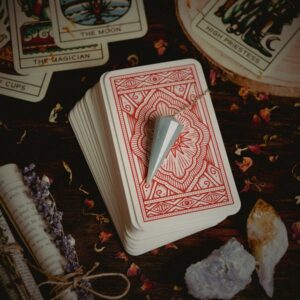
The Global Influence of Tarot
Tarot has transcended cultural boundaries and found a place in various societies around the world. Different cultures have adapted the tarot tradition to reflect their unique beliefs and customs. For instance, in Japan, tarot cards are often infused with Shinto and Buddhist symbolism, creating decks that resonate with Japanese spirituality.
Similarly, in Latin America, tarot is often integrated with indigenous practices and folklore. The fusion of tarot with local traditions has resulted in diverse interpretations and reading styles. This global influence highlights the adaptability of tarot as a tool for self-discovery and connection to spiritual heritage.
Tarot in Popular Culture
The representation of tarot in popular culture has also played a significant role in its modern perception. Tarot cards frequently appear in literature, films, and television shows, often depicted as mysterious tools of fortune-telling. These portrayals have sparked interest and curiosity among audiences, contributing to a resurgence in tarot reading.
Movies like “The Last Unicorn” and TV shows like “Buffy the Vampire Slayer” have featured tarot cards as symbols of destiny and fate. This mainstream exposure has helped demystify tarot, making it more accessible to a broader audience.
The Future of Tarot
As we look to the future, tarot card reading continues to evolve. New decks are being created, reflecting diverse cultures, perspectives, and artistic styles. This innovation expands the possibilities for interpretation and encourages readers to explore the cards’ meanings in unique ways.
The fusion of technology and tarot also promises exciting developments. Virtual readings, apps, and online communities foster connections among tarot enthusiasts. These platforms facilitate the sharing of knowledge, experiences, and interpretations, ensuring that the practice of tarot remains dynamic and relevant.
Conclusion
In conclusion, the history and origins of tarot card reading reveal a rich tapestry of cultural influences, symbolism, and human experience. From its humble beginnings as a card game to its current status as a powerful tool for self-exploration and guidance, tarot continues to captivate individuals across the globe. As society evolves, so too will the practice of tarot, ensuring its place in the landscape of spiritual and psychological exploration for years to come.
Bibliography
- Kaplan, Stuart R. The Tarot: History, Symbolism, and Divination. 1st ed. New York: R. H. Macy & Co., 1980. ISBN: 978-0517574287.
- Greer, Rachel Pollack. 78 Degrees of Wisdom: A Tarot Journey to Self-Awareness. 1st ed. York Beach, ME: Weiser Books, 1980. ISBN: 978-1578632928.
- Murray, Paul. Tarot: The Ultimate Guide to Tarot Card Reading. 1st ed. New York: Skyhorse Publishing, 2020. ISBN: 978-1510742366.
- Hajo Banzhaf. Tarot and Psychology: Spectrums of Possibility. 1st ed. Minneapolis: Destiny Books, 1996. ISBN: 978-0892816555.
- Waite, Arthur Edward. The Pictorial Key to the Tarot. 1st ed. London: George Redway, 1888. ISBN: 978-1614272172.
- De Gébelin, Antoine Court. Le Monde Primitif. 1st ed. Paris: 1781. (Various editions available, check library archives for specific ISBNs).
- Crowley, Aleister. The Book of Thoth: A Short Essay on the Tarot of the Egyptians. 1st ed. 1944. ISBN: 978-1934170160.
- https://en.wikipedia.org/wiki/Tarot


